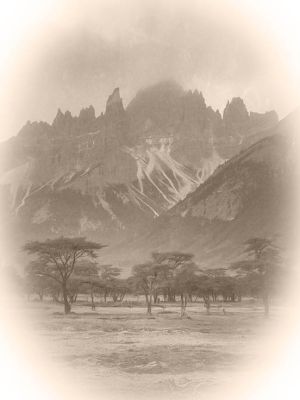Sanctuary Vale: Difference between revisions
No edit summary |
No edit summary |
||
| (42 intermediate revisions by the same user not shown) | |||
| Line 1: | Line 1: | ||
{{ | {{Regions of Terasil Infobox | ||
|Name=Sanctuary Vale | |Name=Sanctuary Vale | ||
|Image=[[File:Sanctuary Vale Photo.jpg|center|frameless]] | |||
|Location=Between the [[Citadel Mountains]] and the [[Khargaath Range]] | |Location=Between the [[Citadel Mountains]] and the [[Khargaath Range]] | ||
|Realm=[[Terasil]] | |Realm=[[Terasil]] | ||
|Borders on=Khargaath Range, Citadel Mountains | |Borders on=Khargaath Range, Citadel Mountains | ||
}} | }} | ||
{{ | {{Regions of Terasil Sections | ||
|Introduction=Sanctuary Vale is a vast highland basin located in central Terasil | |Introduction=Sanctuary Vale is a vast highland basin located in central [[Terasil]]. Positioned between the circular wall of the [[Citadel Mountains]] to the east and the jagged volcanic ridges of the [[Khargaath Range]] to the west, the vale is among the most culturally significant regions in Tersasil. It serves as the spiritual and ancestral heartland of the [[Duranthi]], containing their largest settlements. | ||
|Access=Access to Sanctuary Vale is possible via | |Access=Access to Sanctuary Vale is possible via multiple overland passes and subterranean routes: | ||
* | * [[Tarsuun Pass]] — The primary overland route into the vale from the west. | ||
* The Fractured Wedge — A northeastern corridor of unstable terrain, largely avoided on the surface, but tunneled beneath by Deep Road arteries linking the vale to the [[Astrathal Range]] in [[Minthal]]. | |||
|Historical Significance=During the [[Great Erosion]], Sanctuary Vale became a refuge for retreating populations of Orasians. | |||
Upon arrival of the ascendant spirits to [[Orethil]], the Spirit [[Varunel]], the spirit of memory and history, and [[Tehrum]], the spirit of mountains and stone, first rooted their domain in the Khargaath Range near modern [[Djes-Val]]. | |||
Sanctuary Vale played a defining role in the development of Duranthi culture. According to preserved records, the first permanent settlements arose here during the early days of The [[Great Migration]], shielded by the surrounding mountains. The vale’s defensibility enabled the Duranthi to thrive. | |||
|Climate=The region maintains a semi-arid climate, influenced by the surrounding elevations. | |||
|Climate= | |Flora and Fauna=<noautolinks>{{see also|Flora and Fauna of Sanctuary Vale}}</noautolinks> | ||
| | |||
* [[Kar-Thal]] | The highland savanna of Sanctuary Vale supports a distinct ecosystem adapted to its rich soil and exposed stone formations. Native plants such as Vale Grass and Kire Shrubs mark ground stability and are used in traditional Duranthi fieldwork, while sparse tree species like Pyr and Spring Figs are scattered across the land. Local fauna include the heavy-plated Slateback Behemoth and Pierrooks—tall, sharp-voiced birds. | ||
|Notable features=* [[Kar-Thal]] – Principal Duranthi city and capital. | |||
* Dul-Val | * Djes-Val – Highland settlement focused on academic stewardship and preserving history. | ||
* [[Dul-Val]] – Threshold settlement near the early site of Duranthi civilization and a site currently safeguarding the Tarsuun Pass. | |||
* | * [[Mar-Thal]] – Eastern military-administrative city near the Fractured Wedge. | ||
|Bibliography=<noautolinks>{{BibliographyEntry|Category=history|Title=Our Sanctuary: A Duranthi History}} by Jek-Karun | |||
</noautolinks> | |||
}} | }} | ||
Latest revision as of 20:25, 28 September 2025
| Sanctuary Vale | |
|---|---|
| Image |  |
| Location | Between the Citadel Mountains and the Khargaath Range |
| Realm | Terasil |
| Borders On | Khargaath Range • Citadel Mountains |
Introduction
Sanctuary Vale is a vast highland basin located in central Terasil. Positioned between the circular wall of the Citadel Mountains to the east and the jagged volcanic ridges of the Khargaath Range to the west, the vale is among the most culturally significant regions in Tersasil. It serves as the spiritual and ancestral heartland of the Duranthi, containing their largest settlements.
Access
Access to Sanctuary Vale is possible via multiple overland passes and subterranean routes:
- Tarsuun Pass — The primary overland route into the vale from the west.
- The Fractured Wedge — A northeastern corridor of unstable terrain, largely avoided on the surface, but tunneled beneath by Deep Road arteries linking the vale to the Astrathal Range in Minthal.
Historical Significance
During the Great Erosion, Sanctuary Vale became a refuge for retreating populations of Orasians.
Upon arrival of the ascendant spirits to Orethil, the Spirit Varunel, the spirit of memory and history, and Tehrum, the spirit of mountains and stone, first rooted their domain in the Khargaath Range near modern Djes-Val.
Sanctuary Vale played a defining role in the development of Duranthi culture. According to preserved records, the first permanent settlements arose here during the early days of The Great Migration, shielded by the surrounding mountains. The vale’s defensibility enabled the Duranthi to thrive.
Climate
The region maintains a semi-arid climate, influenced by the surrounding elevations.
Flora and Fauna
The highland savanna of Sanctuary Vale supports a distinct ecosystem adapted to its rich soil and exposed stone formations. Native plants such as Vale Grass and Kire Shrubs mark ground stability and are used in traditional Duranthi fieldwork, while sparse tree species like Pyr and Spring Figs are scattered across the land. Local fauna include the heavy-plated Slateback Behemoth and Pierrooks—tall, sharp-voiced birds.
Notable features
- Kar-Thal – Principal Duranthi city and capital.
- Djes-Val – Highland settlement focused on academic stewardship and preserving history.
- Dul-Val – Threshold settlement near the early site of Duranthi civilization and a site currently safeguarding the Tarsuun Pass.
- Mar-Thal – Eastern military-administrative city near the Fractured Wedge.
Bibliography
Our Sanctuary: A Duranthi History by Jek-Karun